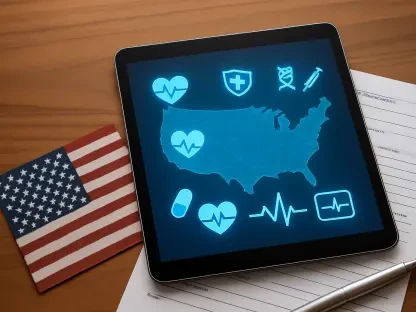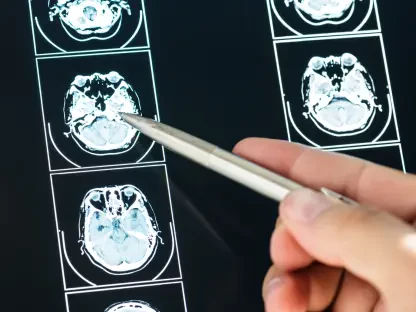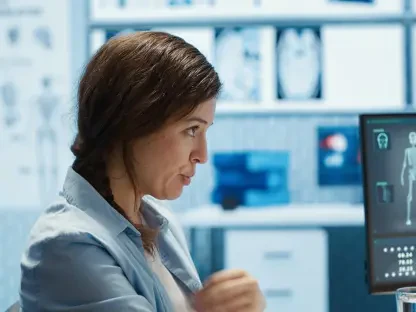The world of oncology care, traditionally rooted in face-to-face consultations and hospital visits, is undergoing a radical transformation. Driven by technological advancements, this shift is reshaping the landscape of cancer treatment, making it more accessible, personalized, and efficient. Patients, healthcare providers, and the broader treatment ecosystem are experiencing profound changes as digital innovations redefine protocols and processes. From enhancing remote engagement to streamlining clinical trials, technology is proving to be not just an accessory in oncological practices but a core component that is revolutionizing the way care is delivered and received. This exploration unravels the emergent landscape of oncology care shaped by technology, marking a transition from conventional methods to cutting-edge digital solutions.
The Rise of Telemedicine in Oncology
Telemedicine has emerged as a pivotal element in oncology care, particularly accelerated by the COVID-19 pandemic’s unique challenges. Initially conceived to address access issues for rural patients, telemedicine faced considerable hurdles due to stringent regulations that limited its adoption. However, the global health crisis served as a catalyst for its transformation into a mainstream practice, dramatically increasing its utilization in a matter of months. This shift allowed patients and healthcare providers to maintain continuity in care amid lockdowns and social distancing mandates. The integration of telemedicine has opened doors to safer and more convenient interaction between cancer patients and their doctors, paving the way for enhanced patient outcomes.
Despite its rapid acceptance, the sustainability of telemedicine’s financial viability remains under scrutiny. As post-pandemic trends indicate a potential reduction in payer support, oncologists are cautiously optimistic about maintaining telemedicine’s momentum. Nevertheless, the foundational impact of telemedicine in bridging physical gaps in care delivery is indisputable. By allowing consultations and follow-ups to occur without necessitating physical presence, telemedicine has not only supported ongoing patient care but also reduced logistical burdens, offering a glimpse into a future where digital health interventions are integral to cancer treatment.
Overcoming Challenges with Telehealth
While telemedicine serves as a crucial tool in oncology, certain limitations must be acknowledged. Treatments necessitating in-person interaction, such as chemotherapy, naturally require physical presence, posing challenges to the telehealth model. Navigating these constraints has become a critical task for oncology practices striving to balance remote care with necessary in-person interventions. Telehealth has nonetheless facilitated improved collaboration within medical teams, assisting in mobilizing the right healthcare professionals at key moments to ensure comprehensive patient care.
Moreover, telehealth’s role extends to enhancing coordination among oncology specialists. By providing platforms for seamless interaction, telehealth aids medical teams in sharing insights and developing collective strategies to tackle complex cancer cases. For patients, this implies receiving cohesive care where various specialists contribute their expertise to optimize treatment outcomes. As the boundaries of telehealth are pushed further, oncology practices continue to explore avenues to integrate telemedicine into broader healthcare ecosystems effectively. Leveraging digital tools to overcome inherent challenges ensures patients benefit from holistic care while innovative solutions bridge the gaps between remote and in-person treatment needs.
The Advent of ePROs for Patient Empowerment
The introduction of electronic patient-reported outcomes (ePROs) represents a significant stride forward in patient engagement within oncology. These tools revolutionize how symptom management is approached, enabling real-time interaction between patients and caregivers. This shift from transactional exchanges to proactive symptom monitoring allows healthcare providers to offer timely interventions without relying on conventional scheduling. As patients report symptoms electronically, the immediacy of responses ensures elevated care delivery and improved patient satisfaction. ePROs mark a notable departure from traditional phone triage methods, introducing structured pathways for symptom management that facilitate urgent care needs.
Healthcare professionals, particularly nurses, benefit from ePROs by operating at the pinnacle of their licenses, optimizing clinical efficiency. By prioritizing timely interventions based on electronically reported symptoms, ePROs streamline the decision-making process, enhancing practice management. The application of ePROs not only empowers patients to take a proactive role in reporting their health status but also fortifies the collaboration between care teams. This seamless integration of digital tools paves the way for personalized care where caregivers can swiftly address the unique needs of patients while maintaining high standards of clinical efficacy.
Enhancing Clinical Efficiency
Streamlining clinical efficiency within oncology practices is a crucial benefit offered by ePROs. These electronic pathways for symptom management transform traditional triage approaches, allowing healthcare providers to prioritize patient care swiftly. By enabling nurses to address reported symptoms and allocate attention where necessary, ePROs facilitate practice optimization, resulting in faster response times and more effective patient care. This enhanced efficiency extends to patient engagement, ensuring interactions are tailored to specific health needs and experiences.
The adoption of ePROs also plays a role in increasing the capacity of oncology practices to handle larger patient volumes. With structured pathways that identify and prioritize urgent symptoms, ePROs ensure practices can manage increased patient interactions without compromising quality. This scalability is essential as oncology practices strive to address the growing demand for cancer treatment. By harnessing digital capabilities, healthcare providers can deliver high-quality care efficiently, improving the overall functioning of oncological services. In this way, ePROs echo the continuing transformation of oncology care, where technological integration facilitates not only advanced treatment pathways but also elevated standards of clinical practice.
Adapting to Diverse Patient Needs
The success of remote engagement tools hinges on recognizing and addressing the diverse needs of patients undergoing oncological treatment. Factors such as demographics, educational background, current treatment protocols, and existing comorbidities significantly influence patient interaction preferences. Oncology practices must navigate these variables adeptly, employing flexible approaches to accommodate varying patient experiences effectively. By understanding individual characteristics and tailoring communication strategies, practices can optimize remote engagement tools and ensure their efficacy in diverse settings.
Beyond technological adaptation, a patient-centric approach requires practices to remain responsive to shifting expectations and interactions. As digital health solutions integrate further into oncology, practices will need to embrace adaptability, providing patient experiences that align with unique health needs and preferences. By focusing on personalized interactions and harnessing the wealth of data available, oncology care continues to evolve, driven by technology that reinforces its commitment to patient empowerment. Ensuring patient satisfaction while maintaining high standards of care remains central to this evolution, showcasing the transformational power of technology in oncology ecosystems.
The Role of Technology in Clinical Trials
Technology serves a pivotal role in enhancing the efficacy and accessibility of clinical trials within oncology. Remote engagement tools streamline processes, breaking down barriers to patient participation and improving overall trial management. By facilitating seamless patient interactions and efficient data collection, technological advancements ensure trials progress smoothly, advancing cancer research. Moreover, digital tools enable decentralized trials, expanding participant access beyond traditional geographic constraints and fostering inclusivity in clinical studies.
The intersection of clinical trials and technology embodies potential breakthroughs in oncology, promoting timely advancements in understanding and treating cancer. Remote tools empower researchers and clinicians to conduct trials with precision while optimizing resource allocation. The integration of technology into trial processes not only reflects evolution driven by necessity but also symbolizes an ongoing commitment to refining clinical methodologies for better patient outcomes. As cancer research incorporates advanced digital tools, the future of oncological studies remains promising, propelled by technology that reinforces collaboration and innovation.
Looking Toward an Integrated Future
An integrated approach to telemedicine and digital tools presents a blueprint for the future of oncology care. Solutions like ePROs exemplify the move toward personalized and efficient treatment paradigms, showcasing technology’s role in optimizing healthcare delivery. Improved patient-provider communication and streamlined practice management reflect ongoing advancements, paving the way for comprehensive, patient-centric approaches.
As oncology care continues to evolve through technological integration, the journey of transformation remains dynamic and promising. With the potential to cater to both clinical practitioners and patients, technology-fueled solutions are central to reshaping the landscape of cancer treatment, ensuring it remains adaptive and responsive to future needs. The fusion of telemedicine with emerging tools highlights the ongoing transformation of oncology care, reinforcing its capacity to deliver impactful and lasting advancements. In doing so, the realm of oncology embraces an integrated future infused with innovation and efficiency at its core.









